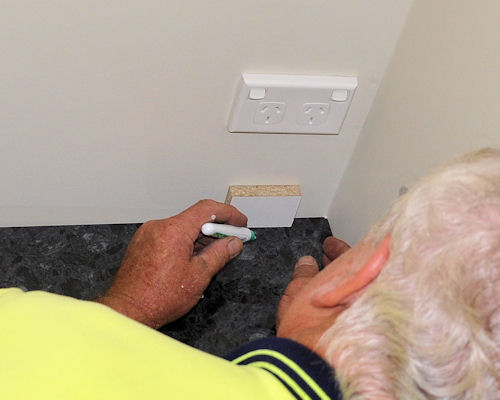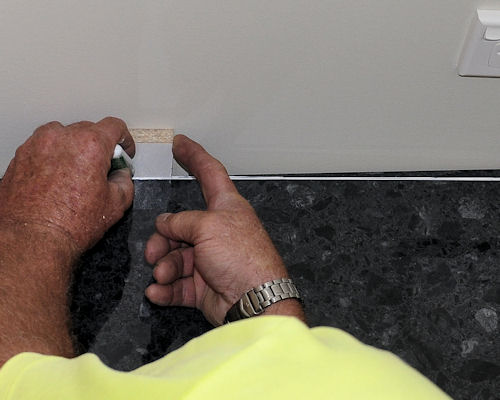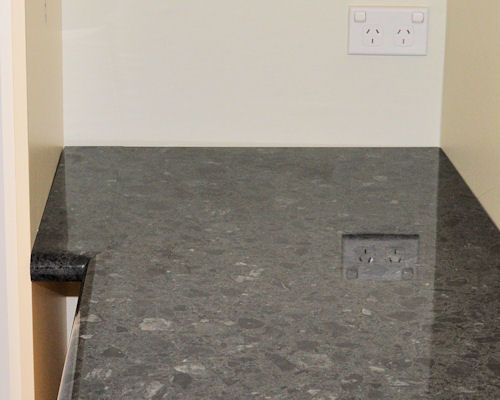Panels and bench tops
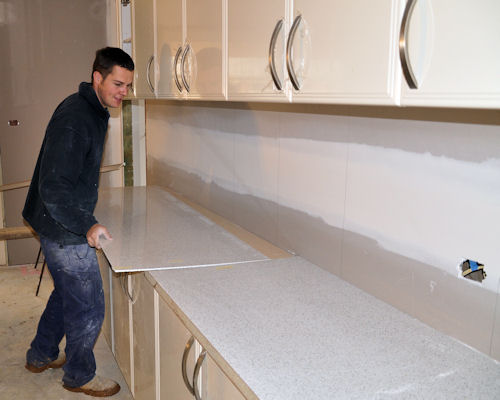 Audio for slide 1 (mp3 |6|KB)
Audio for slide 1 (mp3 |6|KB)
If you need to fit a panel or bench top to a wall and the corner isn't square, or the wall has deviations in it, you may need to shape the panel before it will fit tightly.
When you're working with panels that have visible edges butting up against a wall, you should try to achieve a gap of no more than 2 mm at the worst point.

When you're working with panels that have visible edges butting up against a wall, you should try to achieve a gap of no more than 2 mm at the worst point.

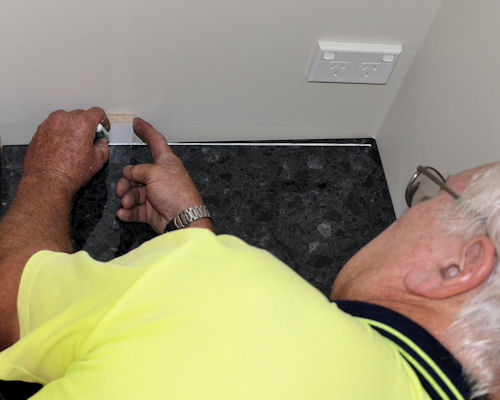 Audio for slide 2 (mp3 |6|KB)
Audio for slide 2 (mp3 |6|KB)
The procedure for scribing and cutting a panel to get a tight fit is exactly the same as for making a template.
The only difference is that now you're working directly with the piece that needs to be fitted.
We talked about the process of making templates in the unit Checking fit of cabinets.
You should go back to that unit if you're unsure about how templates are used or have forgotten the basic principles involved.

The only difference is that now you're working directly with the piece that needs to be fitted.
We talked about the process of making templates in the unit Checking fit of cabinets.
You should go back to that unit if you're unsure about how templates are used or have forgotten the basic principles involved.

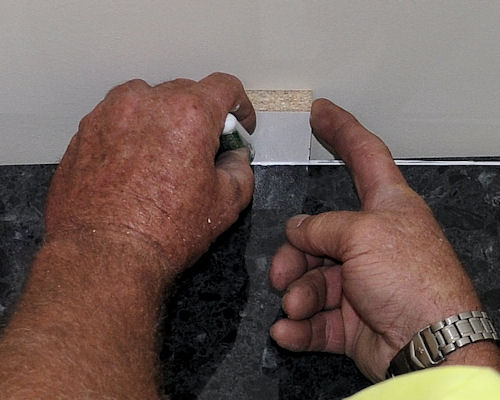 Audio for slide 3 (mp3 |6|KB)
Audio for slide 3 (mp3 |6|KB)
Scribing and shaping a panel
To scribe a panel to the shape of a wall, you need some form of spacer to guide the pencil or marker. The spacer needs to be slightly thicker than the gap at its widest point. Some installers simply use a small block of wood, but you can buy specialised scribing tools that are adjustable to suit different situations. For complex contours, such as scribing around a cornice, you can also use a compass or copy jig.

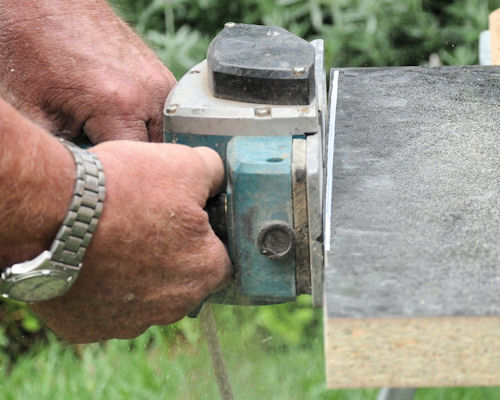 Audio for slide 6 (mp3 |6|KB)
Audio for slide 6 (mp3 |6|KB)
- Cut or shape the panel using the appropriate tool, such as a jig saw or electric plane.
Make sure you clamp the panel securely to a saw stool or work bench and wear all required PPE while using the tool.
It's also best to do the cutting outside if possible, to minimise the amount of sawdust that you need to clean up later.

Learning activity
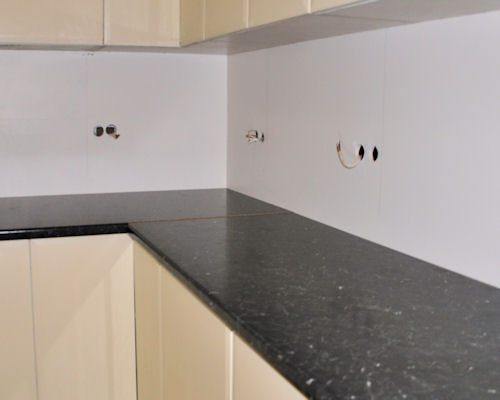 Audio for slide 8 (mp3 |6|KB)
Audio for slide 8 (mp3 |6|KB)
Ask your supervisor what the process is in your company for scribing panels and bench tops. Do your installers use special marking tools, a compass, or a pencil and packing piece? Do they use different tools for different purposes?
Share your answers with your trainer and other learners in your group.

Go to Assignment
Industry Network Training and Assessment Resourses
© 2016 Workspace Training


